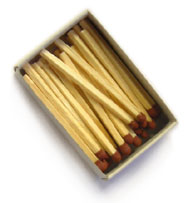 You are given a box of matches. With these matches you find that you can form all possible pairs of the four regular figures: triangle, square, pentagon and hexagon, using all the matches every time. You are given a box of matches. With these matches you find that you can form all possible pairs of the four regular figures: triangle, square, pentagon and hexagon, using all the matches every time.
For example, if the box contains 11 matches, you could form the three pairs of figues illustrated below, but not the triangle and the hexagon, or the square and pentagon, or the square and hexagon. Hence the box cannot contain 11 matches. Of course no polygon can have sides of varying lengths. What is the smallest number of matches in the box? |
|||
 |
 |
 |
|
